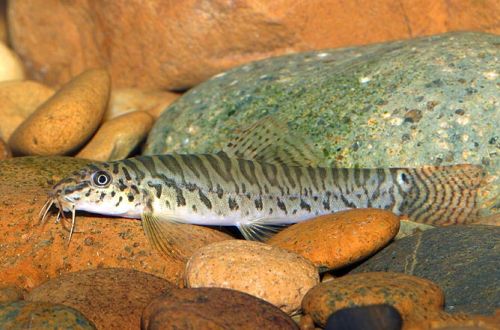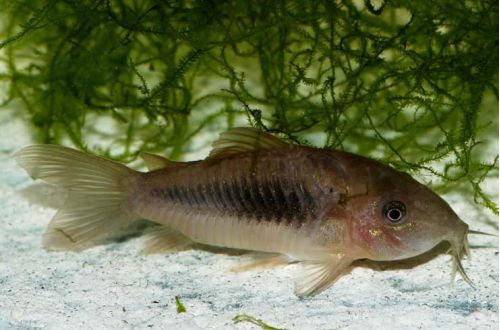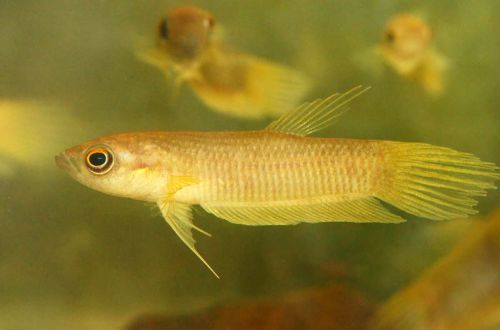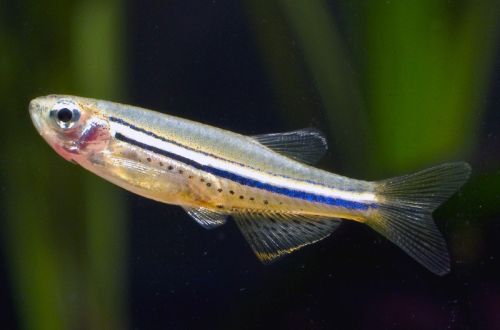
Nudist pictilis
The pictilis char, scientific name Paracanthocobitis pictilis, belongs to the Nemacheilidae family. Formerly known as Acanthocobitis pictilis, “Acanthocobitis” later became part of the genus name. Not an easy fish to keep, given its need for very clean water with turbulent conditions (fast current) and not a simple disposition in relationships with relatives and other fish.

Contents
Habitat
It comes from Southeast Asia from the territory of the southern provinces of Myanmar (formerly Burma) from the Ataran River basin. Inhabits shaded areas of fast-flowing rivers. A typical biotope is a turbulent stream with rocky substrates, snags, patches of leaf litter clogged in rapids/pits on the bottom.
Brief information:
- The volume of the aquarium – from 80 liters.
- Temperature – 21-26°C
- Value pH — 6.0–7.5
- Water hardness – soft (1-10 dGH)
- Substrate type — stony
- Lighting – subdued
- Brackish water – no
- Water movement – moderate or strong
- The size of the fish is 8–9 cm.
- Food – any sinking food
- Temperament – inhospitable
- Keeping alone in a small aquarium
Description
Adults reach a length of 8–9 cm. The fish has an elongated body and short fins. The coloration is gray with a pattern of dark strokes and irregularly shaped spots, the abdomen is light. On the head near the mouth are two pairs of antennae. Sexual dimorphism is weakly expressed. In males, unlike females, a shallow groove is noticeable under the eye, and during the mating season, the fins acquire a red pigment.
Food
An omnivorous species, it will accept most of the foods popular in the aquarium trade in live, frozen and dry form. It is advisable to feed a variety of foods, for example, in combination with dry food with brine shrimp, daphnia, bloodworms, etc. foods should be sinking, fish, as a rule, do not accept food that floats on the surface.
Maintenance and care, arrangement of the aquarium
The optimal size of an aquarium for one or two fish starts at 80 liters. A good design option would be an imitation of the natural habitat, i.e. a stream or river with a substrate of stones, boulders of variable size, sand, gravel with snags fixed to the ground. With the help of decorative elements, several places for shelters are formed in the form of crevices, grottoes. If desired, you can use live plants from among Anubias, unpretentious aquatic mosses, ferns and other vegetation that can be fixed on a woody structure. A subdued lighting level is recommended.
Pictilis char needs clean, running water rich in dissolved oxygen. Internal filters, in addition to their main function, will provide an artificial flow, and additional aerators will provide a sufficient concentration of oxygen. In addition to equipment, a number of mandatory aquarium maintenance procedures contribute to high water quality, in particular, the weekly replacement of part of the water with fresh water and the timely removal of organic waste (food leftovers, excrement).
Behavior and Compatibility
Males are aggressive and often conflict with relatives if kept alone or in a small group. When there are more than 6-7 individuals in the community, the hostility of dominant males is sprayed and in a large aquarium they can quite get along in a place. May be compatible with other species of comparable size found in the water column or near the surface. Bottom species (the rest of the chars and catfish) can be difficult, so they are best avoided.
Breeding / breeding
At the time of preparation of materials for the article, there were no successful cases of breeding Golts pictilis in a home amateur aquarium.
Fish diseases
Health problems arise only in case of injuries or when kept in unsuitable conditions, which depresses the immune system and, as a result, provokes the occurrence of any disease. In the event of the appearance of the first symptoms, first of all, it is necessary to check the water for the excess of certain indicators or the presence of dangerous concentrations of toxic substances (nitrites, nitrates, ammonium, etc.). If deviations are found, bring all values back to normal and only then proceed with treatment. Read more about symptoms and treatments in the Aquarium Fish Diseases section.





